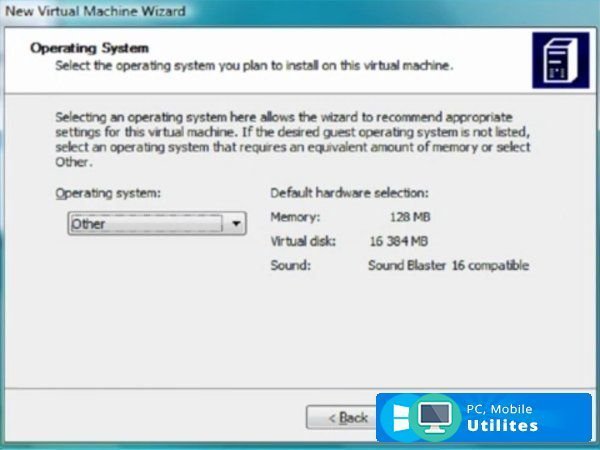

- #Micorosft virtual pc software#
- #Micorosft virtual pc Pc#
- #Micorosft virtual pc windows 7#
- #Micorosft virtual pc windows#
On this screen you are asked what you want to name the VHD file. I wonder what bizarre logic was being used that assumed you usually had an existing VHD when you were creating a brand new virtual computer? Unless for some reason you have to rebuild the VMC file, select the A new virtual hard disk option and click next. This is another of the screens that baffles me. On the screen above you are asked about the Virtual Hard Disk, or your VHD file. Use it to move the RAM up or simply type a new value in the text box and click Next. For doing Visual Studio development, I’d go 512 to 1024.Ĭlick the Adjusting the Ram option and the slider bar will appear. You may want more, depending on what you’ll be doing. Unless you are running DOS or some older OS, I would suggest bumping this up to at least 256 meg. On the next display you will be asked about the amount of RAM to use.īy default, VPC selects Using the recommended RAM, which is a measly 128 meg. If you are installing anything else, such as a Linux distro (short for distribution), select Other, otherwise select the OS you will be installing and click Next. As you can see, there’s lots of built in support for past Microsoft OS’s (and oddly OS/2). On this screen it will ask you what operating system you’d like to install. (By the way, in time you’ll want to use a better name, such as MyXP or MyUbuntu, but for now this will do.) For a new machine name then, type in D:\VPC\My New Machine and click next. That way you can store your VMC and VHD files in the same location. I created a VPC directory on my D drive, I’d suggest you do something similar. The problem is this is your C drive, and if you are following directions you really want to run your VPCs off a different drive other than C. You should make sure to read this carefully, if you don’t give a path then by default the vmc file will be placed in your My Documents\My Virtual Machines directory. It’s asking you what you wish to name your computer. Away you go, you’re working in your VPC.īut let’s get back to the task at hand and create a brand new machine. Copying these two files to another computer, launch VPC and pick this Add option, and you will open the VMC file.
#Micorosft virtual pc Pc#
Virtual PC stores it’s data in two files, a VMC file that saves the various settings for your virtual computer, and a VHD which is your virtual hard drive. Add an existing virtual machine on the other hand can be quite useful. Use default settings to create a virtual machine isn’t that useful, it creates a VPC but with minimal memory. Start by clicking on the New button, and you’ll see this dialog:Ĭreating a virtual machine seems like the way to go, but let me mention the other two options briefly. Now what? Let’s walk through it step by step. The first time you run it, you see the display below. OK, you’ve downloaded Microsoft Virtual PC (here after referred to as VPC) and installed it. Check out my post forĪp– Virtual PC 2007 Step by Step – The Advanced Settings Video! Some good info that adds to the scope of what’s here. Update: Ap– There’s a second video now showing the advanced settings. And it’s in Video! Take a look at my post forĪp– Virtual PC 2007 Step by Step – The Video! Users of Microsoft Virtual PC gave it a rating of 4 out of 5 stars.Update: Ap– While the instructions below are still valid, I’ve created a new version of this post for Virtual PC 2007. Microsoft Virtual PC runs on the following operating systems: Windows. The most prevalent version is 6.0.156.0, which is used by 40 % of all installations. It was initially added to our database on.

The latest version of Microsoft Virtual PC is 6.1, released on. It was checked for updates 157 times by the users of our client application UpdateStar during the last month.
#Micorosft virtual pc software#
Microsoft Virtual PC is a Freeware software in the category System Utilities developed by Microsoft.
#Micorosft virtual pc windows#
Microsoft has added several new features to Windows Virtual PC to make it easy to use and to help you run many older Windows XP applications in Windows 7.
#Micorosft virtual pc windows 7#
Windows XP Mode and Windows Virtual PC, available on Windows 7 Professional and Windows 7 Ultimate, allow you to run multiple Windows environments, such as Windows XP Mode, from your Windows 7 desktop.


 0 kommentar(er)
0 kommentar(er)
